
How to Use ENC28J60 Ethernet Module: Examples, Pinouts, and Specs
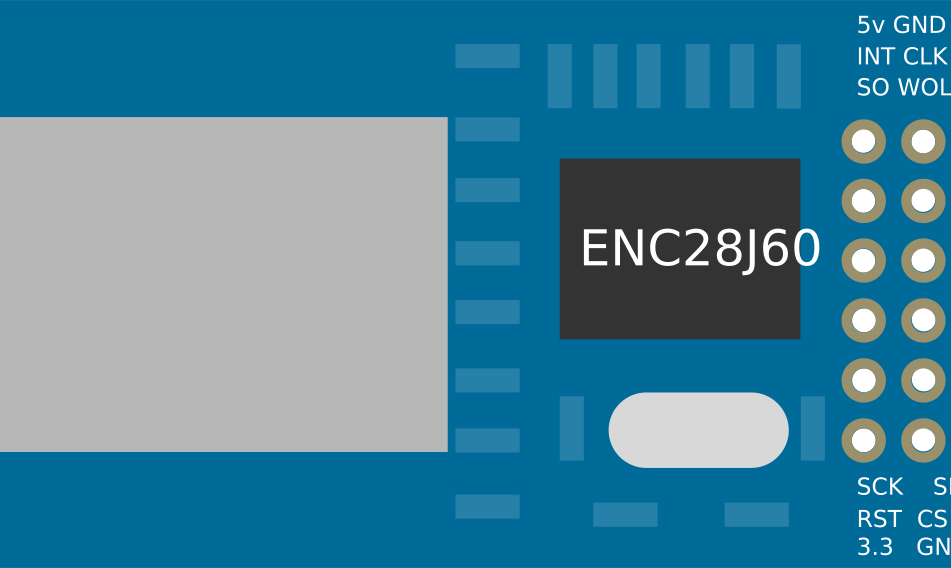
 Design with ENC28J60 Ethernet Module in Cirkit Designer
Design with ENC28J60 Ethernet Module in Cirkit DesignerIntroduction
The ENC28J60 Ethernet Module is a versatile network module that enables Ethernet connectivity for microcontrollers and embedded systems. Utilizing the ENC28J60, a standalone Ethernet controller with an industry-standard Serial Peripheral Interface (SPI), it is particularly suitable for applications where network connection is required for data exchange, remote control, or monitoring purposes. Common applications include home automation systems, IoT devices, and networked sensors.
Explore Projects Built with ENC28J60 Ethernet Module
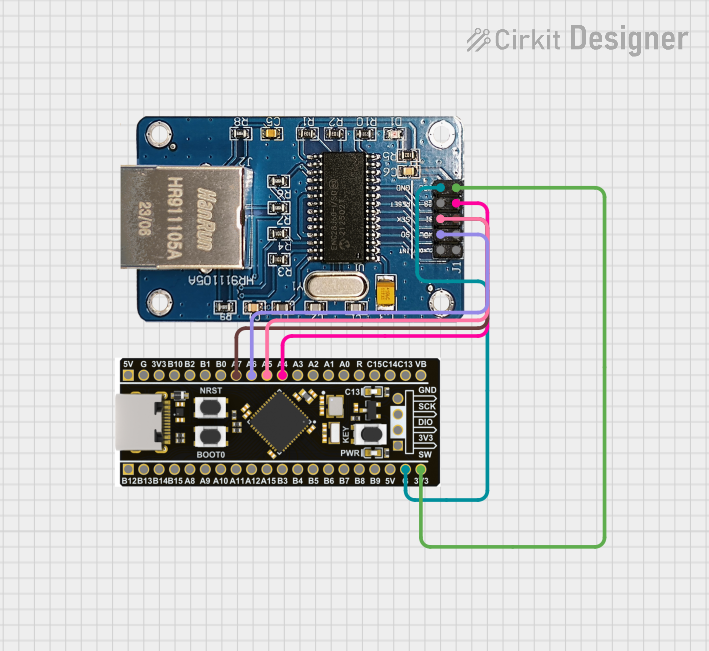
 Open Project in Cirkit Designer
Open Project in Cirkit Designer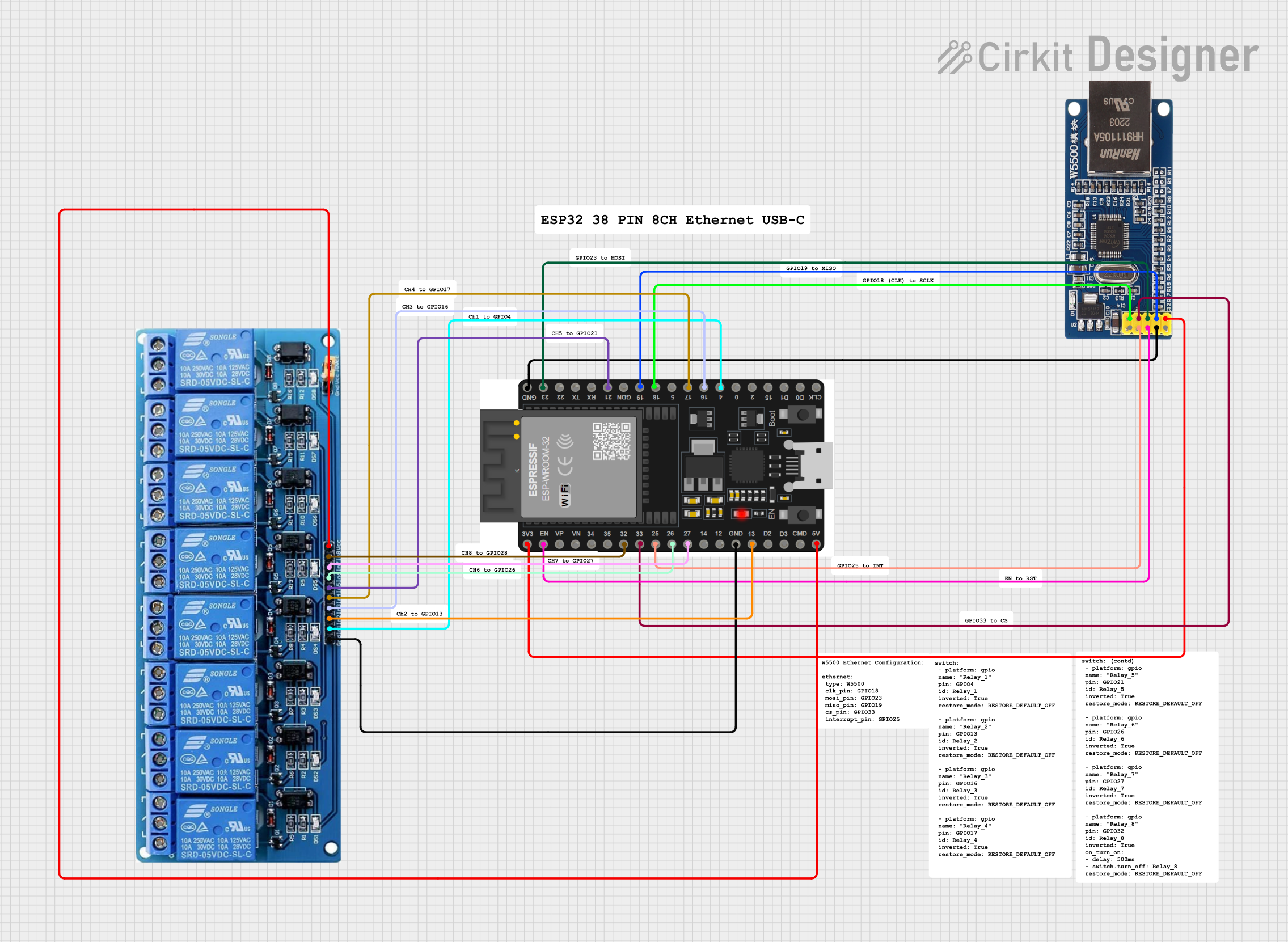
 Open Project in Cirkit Designer
Open Project in Cirkit Designer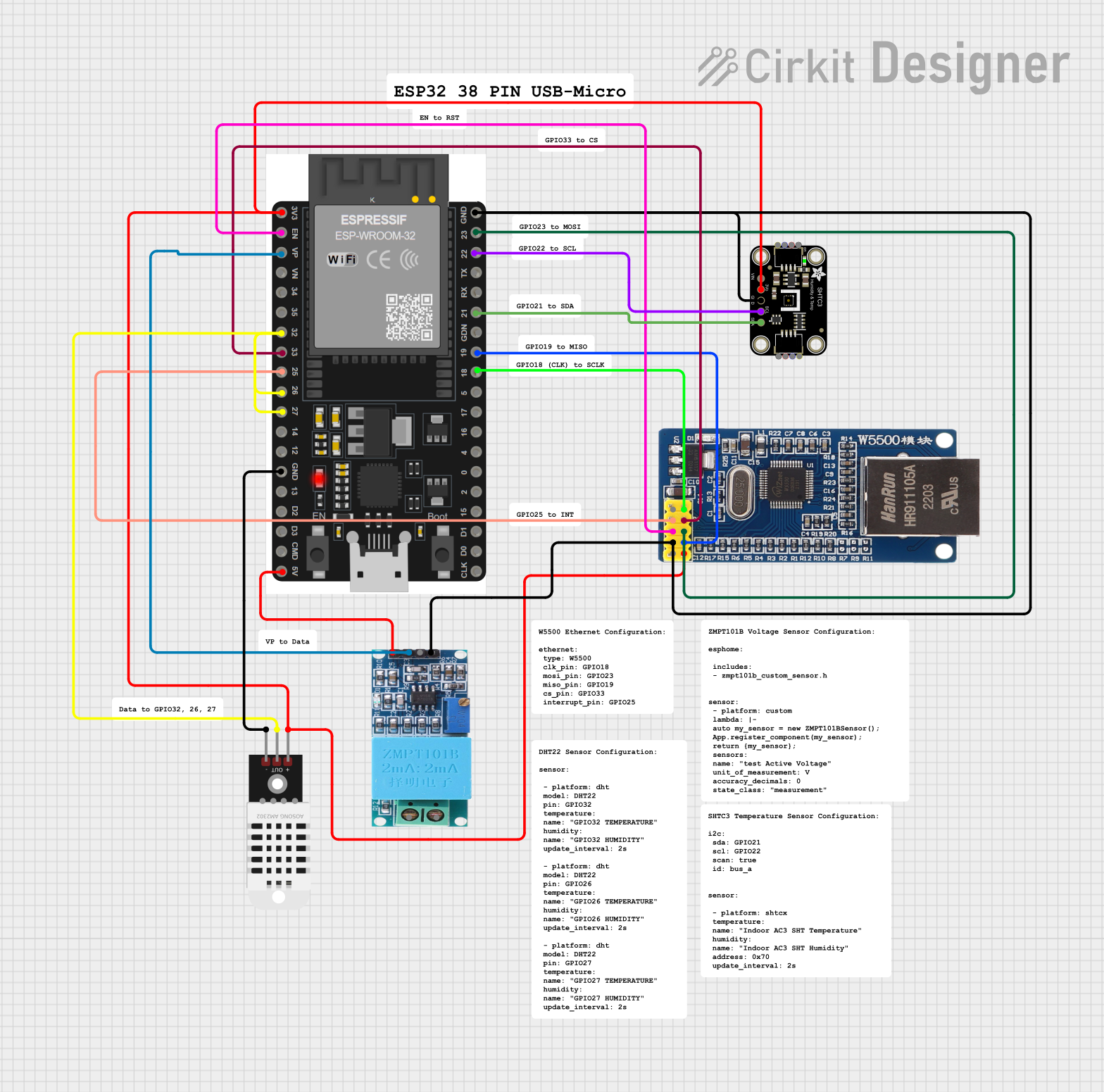
 Open Project in Cirkit Designer
Open Project in Cirkit Designer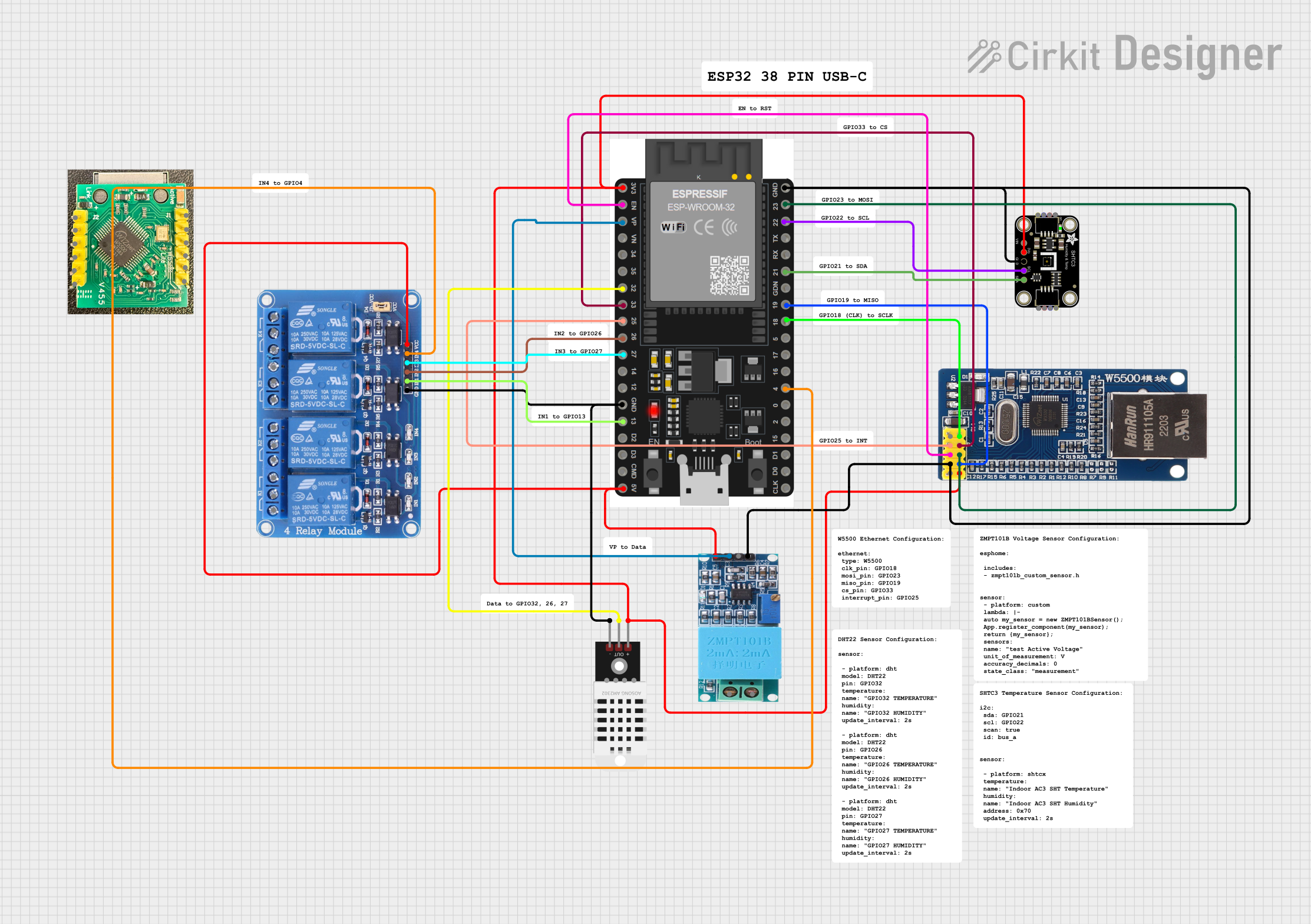
 Open Project in Cirkit Designer
Open Project in Cirkit DesignerExplore Projects Built with ENC28J60 Ethernet Module

 Open Project in Cirkit Designer
Open Project in Cirkit Designer
 Open Project in Cirkit Designer
Open Project in Cirkit Designer
 Open Project in Cirkit Designer
Open Project in Cirkit Designer
 Open Project in Cirkit Designer
Open Project in Cirkit DesignerTechnical Specifications
Key Technical Details
- Voltage Supply: 3.3V
- Current Consumption: 180 mA (typical)
- Temperature Range: -40°C to +85°C (industrial grade)
- Speed: 10 Mbps (Ethernet speed)
- Package: 28-pin QFN/SSOP
Pin Configuration and Descriptions
| Pin Number | Pin Name | Description |
|---|---|---|
| 1 | VCC | 3.3V power supply input |
| 2 | GND | Ground connection |
| 3 | CLKOUT | Clock output (can be left unconnected) |
| 4 | INT | Interrupt output (active low) |
| 5 | WOL | Wake on LAN input (active low) |
| 6 | SO | SPI Serial Output (MISO) |
| 7 | SI | SPI Serial Input (MOSI) |
| 8 | SCK | SPI Clock Input |
| 9 | CS | SPI Chip Select (active low) |
| 10 | RESET | Reset input (active low) |
| 11-28 | NC | No Connection (reserved for internal use) |
Usage Instructions
Integration with a Microcontroller Circuit
- Power Supply: Connect the VCC pin to a 3.3V source and the GND pin to the ground.
- SPI Interface: Connect the SO, SI, SCK, and CS pins to the corresponding SPI pins on the microcontroller.
- Reset: Connect the RESET pin to a digital output pin on the microcontroller for hardware reset control.
- Interrupts (Optional): Connect the INT pin to an interrupt-capable pin on the microcontroller if interrupt-driven operation is desired.
Important Considerations and Best Practices
- Ensure that the power supply is stable and clean, as fluctuations can cause the module to malfunction.
- Use proper decoupling capacitors close to the VCC and GND pins to minimize noise.
- Keep the SPI clock speed within the limits specified by the ENC28J60 datasheet.
- Implement proper SPI handling in software to manage the communication effectively.
- Use shielded Ethernet cables to reduce electromagnetic interference in noisy environments.
Troubleshooting and FAQs
Common Issues
- No Network Connectivity: Check the Ethernet cable and connections, verify the power supply, and ensure correct SPI configuration.
- SPI Communication Errors: Double-check the wiring, ensure that the SPI clock speed is within the acceptable range, and verify that the chip select (CS) is being managed correctly.
Solutions and Tips
- If the module is not responding, perform a hardware reset by toggling the RESET pin.
- Use network diagnostic tools to check for proper IP addressing and network presence.
- Ensure that the microcontroller's firmware includes the necessary drivers and stack for the ENC28J60.
FAQs
Q: Can the ENC28J60 be used with a 5V microcontroller? A: Yes, but level shifters should be used for SPI lines, and the VCC must be supplied with 3.3V.
Q: Is it possible to connect multiple ENC28J60 modules to a single microcontroller? A: Yes, by using separate chip select (CS) lines for each module.
Q: Does the ENC28J60 support full-duplex Ethernet communication? A: No, it supports half-duplex 10 Mbps Ethernet.
Example Code for Arduino UNO
#include <SPI.h>
#include <Ethernet.h>
// MAC address for the Ethernet shield
byte mac[] = { 0xDE, 0xAD, 0xBE, 0xEF, 0xFE, 0xED };
// Initialize the Ethernet client
EthernetClient client;
void setup() {
// Start the Ethernet connection
Ethernet.begin(mac);
Serial.begin(9600);
while (!Serial) {
; // Wait for serial port to connect
}
Serial.println("Ethernet ready");
// Print the IP address
Serial.println(Ethernet.localIP());
}
void loop() {
// Your code here to handle Ethernet communication
}
Note: This example assumes the use of the standard Ethernet library compatible with the ENC28J60 module. Make sure to include the correct library for the ENC28J60 if you're not using a standard Ethernet shield.